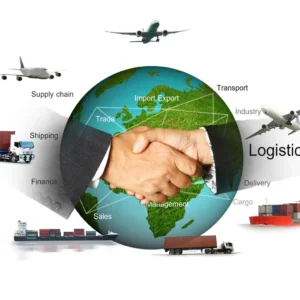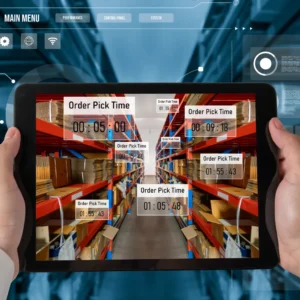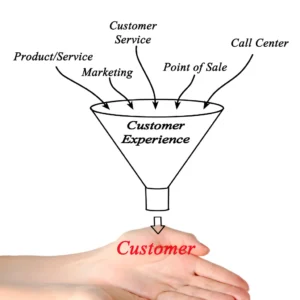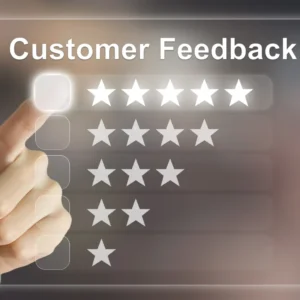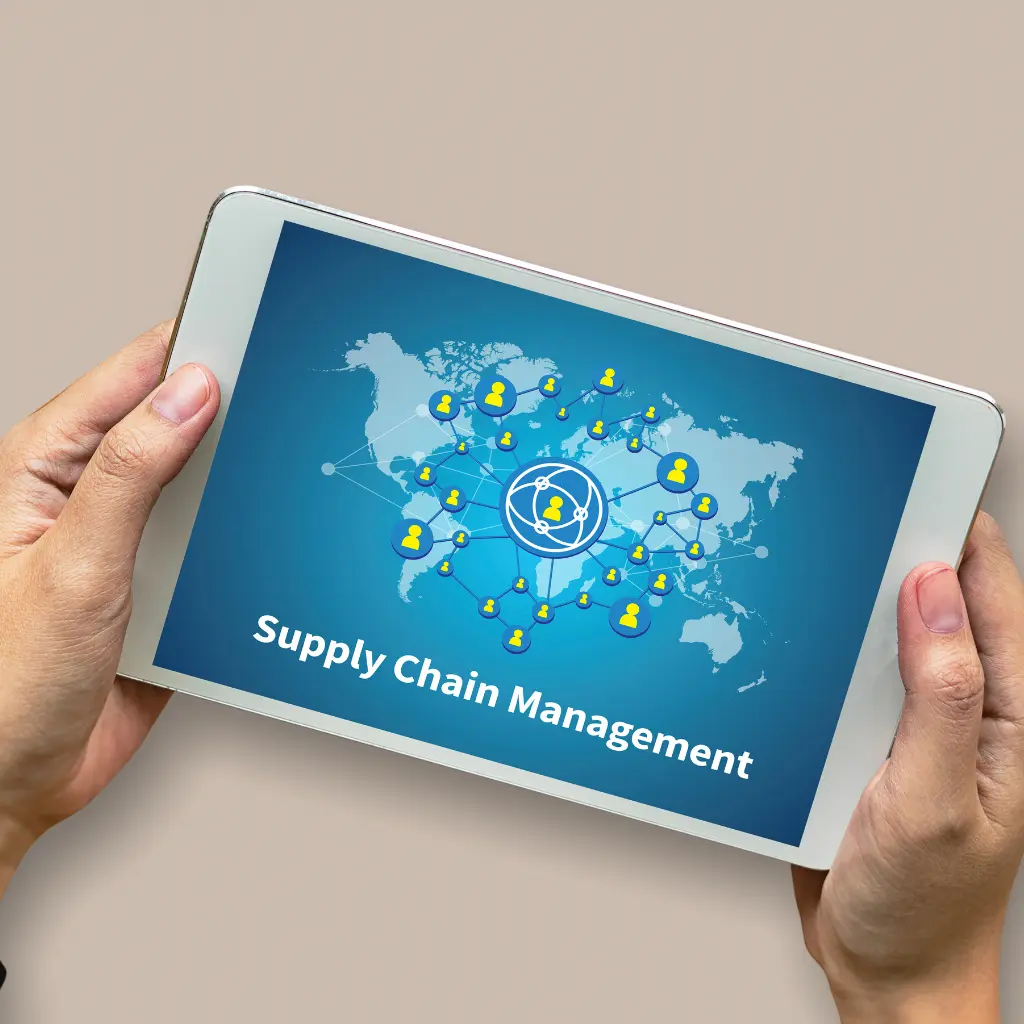
Revolutionizing Logistics
AI Tools for Enhanced Supply Chain Visibility and Collaboration in the Industry Transformation
n the fast-evolving landscape of the logistics industry, integrating Artificial Intelligence (AI) tools has become pivotal for achieving enhanced Supply Chain Visibility and Collaboration.
These tools utilize innovative technologies to revolutionize how logistics operations are managed and optimized. This discussion delves into the intricacies of developing AI Tools for Supply Chain Visibility and Collaboration in the logistics industry.
These tools address challenges, streamline processes, and foster seamless communication within the supply chain ecosystem. Each tool contributes to a more agile, transparent, and efficient logistics network, from predictive analytics and IoT integration to intelligent contracts and collaborative demand forecasting.
Exploring the business knowledge requirements, software and hardware prerequisites, integration challenges, and available market alternatives, we uncover the strategic considerations essential for organizations aspiring to be pioneers in AI-driven logistics advancements.
Table of Contents

Arindam Roy
An Automation Consultant with 25+ years of IT Experience
6 AI Tool ideas for Supply Chain Visibility and Collaboration
Developing AI tools for the Transportation and Logistics industry can significantly enhance supply chain management efficiency, accuracy, and transparency. Here’s an elaboration on each of the selected tools:
Supply Chain Visibility and Collaboration:
- Objective: Improve real-time visibility into the supply chain, enabling stakeholders to make informed decisions promptly.
- AI Features:
- Predictive Analytics: We can use machine learning algorithms to predict possible disruptions, which can help make proactive decisions.
- IoT Integration: Connect IoT devices for real-time tracking of shipments, warehouse conditions, and vehicles.
- Data Visualization: Implement advanced data visualization techniques to represent complex supply chain data in an easily understandable format.
- Natural Language Processing (NLP): Enhance communication and collaboration by implementing NLP for extracting insights from unstructured data.
AI-Powered Supply Chain Analytics:
- Objective: Leverage AI to analyze vast data and derive actionable insights for optimizing supply chain processes.
- AI Features:
- Predictive Analytics: Forecast demand, identify potential bottlenecks, and optimize inventory levels using machine learning models.
- Prescriptive Analytics: Provide actionable recommendations for improving efficiency and reducing costs based on historical and real-time data.
- Anomaly Detection: AI algorithms can identify supply chain irregularities like delays or demand changes.
Collaborative Demand Forecasting:
- Objective: Enhance accuracy in predicting demand through collaboration and incorporating various data sources.
- AI Features:
- Collaborative Filtering: Use collaborative filtering techniques to incorporate insights from multiple stakeholders in the supply chain.
- Machine Learning Forecasting: Apply advanced machine learning models to analyze historical data, market trends, and external factors for precise demand forecasting.
Blockchain for Supply Chain Transparency:
- Objective: Utilizing blockchain technology to ensure transparency and traceability in the supply chain.
- AI Features:
- Smart Contracts: Automate and enforce agreements between different parties in the supply chain using smart contracts, enhancing transparency and reducing disputes.
- AI-Powered Auditing: Implement AI algorithms to verify and audit blockchain transactions, ensuring data accuracy.
Automated Supplier Performance Monitoring:
- Objective: Automate the monitoring and evaluating of supplier performance to ensure adherence to quality, delivery, and cost standards.
- AI Features:
- Predictive Analytics: Anticipate potential supplier issues or disruptions by analyzing historical data and supplier performance trends.
- Natural Language Processing: Analyze unstructured data, such as customer feedback and reviews, to assess supplier reputation and performance.
Smart Contracts for Logistics Agreements:
- Objective: Smart contracts can automate and secure logistics agreements, minimizing disputes and intermediaries.
- AI Features:
- Natural Language Processing: Facilitate the creation and understanding of complex logistics contracts by implementing NLP for contract drafting and interpretation.
- Dynamic Contracts: Use AI to create adaptive contracts that can adjust terms based on real-time data, such as changes in delivery schedules or market conditions.
Integrating AI tools in Transportation and Logistics can enhance supply chain management, reduce costs, and improve efficiency.
Supply Chain Visibility and Collaboration
Business Knowledge Requirements:
- Supply Chain Dynamics: Understanding end-to-end supply chain processes, stakeholders, and critical decision points.
- Regulatory Knowledge: Awareness of industry regulations and compliance requirements.
- User Needs Analysis: Identifying stakeholders’ needs and pain points for effective tool design.
Software Requirements:
- Predictive Analytics Framework: Choose or develop machine learning algorithms for predictive analytics to enhance decision-making.
- IoT Integration Software: Implement a robust IoT integration platform for real-time tracking of shipments, warehouse conditions, and vehicles.
- Data Visualization Tools: Utilize advanced data visualization tools for representing complex supply chain data in a user-friendly format.
- NLP Libraries: Integrate NLP libraries for extracting insights from unstructured data, facilitating communication and collaboration.
Hardware Requirements:
- IoT Devices: Ensure compatibility with various IoT devices, such as sensors for tracking shipments and monitoring warehouse conditions.
- Server Infrastructure: Implement scalable server infrastructure to handle real-time data from IoT devices and support machine learning algorithms.
Integration Requirements to the Existing Toolset:
- For data consistency, ERP and SCM Integration: Connect with Enterprise Resource Planning (ERP) and Supply Chain Management (SCM) systems.
- Collaboration Tool Integration: Integrate with existing collaboration tools (e.g., communication platforms, project management tools) to enhance communication and collaboration.
Training Required for Existing Staff to Run the Tool:
- User Interface Training: Train staff on the tool’s interface for effective navigation and usage.
- Analytics Interpretation Training: Guide interpreting predictive analytics to make informed decisions.
- NLP Utilization Training: Train users on leveraging NLP to extract actionable insights.
Challenges and Workarounds in Implementing the Tool:
- Data Quality Challenges: Workaround involves implementing data validation processes, ensuring accuracy and reliability.
- User Adoption Resistance: Address resistance through comprehensive change management, highlighting the tool’s benefits, and involving end-users in the development process.
Similar Tools Already Available in the Market:
- SAP Integrated Business Planning: Offers end-to-end visibility and collaboration with predictive analytics features.
- Oracle SCM Cloud: Provides a comprehensive supply chain visibility, collaboration, and analytics suite.
Cost and Benefit Analysis:
- Costs: Development costs, including software and hardware investments, training expenses, and ongoing maintenance.
- Benefits: Improved visibility, enhanced collaboration, and proactive decision-making through predictive analytics.
Recommendation:
Considering the complexity and the rapidly evolving nature of AI technologies, a balanced approach is recommended:
- Integrate with Similar Available Products:
- Leverage existing solutions like SAP Integrated Business Planning or Oracle SCM Cloud.
- Customize and integrate to align closely with specific industry requirements.
- Why:
- Faster Implementation: Building from scratch can be time-consuming; integrating with existing products provides a quicker time-to-market.
- Leverage Expertise: Established solutions often come with industry knowledge and best practices.
- Cost-Efficiency: Integrating existing solutions can be more cost-effective than building from scratch while meeting specific business needs.
Integrating with similar available AI Tools for Supply Chain Visibility and Collaboration allows the organization to benefit from proven technologies, accelerate implementation, and allocate resources more efficiently, aligning with its status as an AI pioneer in the Transportation and Logistics Industry.
AI-Powered Supply Chain Analytics
Business Knowledge Requirements:
- Supply Chain Dynamics: Comprehensive understanding of end-to-end supply chain processes, including procurement, production, logistics, and distribution.
- Industry Regulations: Awareness of regulatory frameworks impacting the logistics industry.
- Business Strategy Alignment: Aligning the tool with the organization’s business strategy to meet specific industry needs.
Software Requirements:
- Machine Learning Frameworks: Choose or develop machine learning algorithms for predictive and prescriptive analytics.
- Data Processing Tools: Implement tools for efficient data processing, cleaning, and transformation.
- User Interface Design Tools: Utilize tools for designing a user-friendly interface to present analytics insights.
- Integration Middleware: Implement middleware to integrate with existing software tools seamlessly.
Hardware Requirements:
- High-Performance Computing (HPC): Depending on the scale of data, consider high-performance computing resources to process vast datasets efficiently.
- Storage Solutions: Deploy scalable storage solutions to handle the volume of historical and real-time data.
- Cloud Services: Leverage cloud services for scalability and flexibility in resource allocation.
Integration Requirements to the Existing Toolset:
- ERP and SCM Integration: To ensure data consistency, connect with Enterprise Resource Planning (ERP) and Supply Chain Management (SCM) systems.
- Collaboration Tool Integration: Integrate with existing collaboration tools for effective communication and coordination.
- Data Source Integration: Ensure compatibility with various data sources, including sensors, IoT devices, and external databases.
Training Required for Existing Staff to Run the Tool:
- Data Interpretation Training: Train staff on interpreting predictive and prescriptive analytics insights.
- Tool Utilization Training: Provide comprehensive training on using the analytics tool, including data input, result interpretation, and integration into existing workflows.
Challenges and Workarounds in Implementing the Tool:
- Data Quality Challenges: Implement rigorous data validation processes and ensure data consistency across different sources.
- Resistance to AI Adoption: Address scepticism or resistance among staff by highlighting the tool’s benefits and demonstrating its usability.
Similar Tools Already Available in the Market:
- IBM Supply Chain Insights: Offers AI-driven insights for end-to-end visibility and optimization.
- SAS Supply Chain Analytics: Provides advanced analytics for supply chain optimization, including demand forecasting and inventory management.
Cost and Benefit Analysis:
- Costs: Development costs, including software and hardware investments, training expenses, and ongoing maintenance.
- Benefits: Improved supply chain efficiency, reduced costs through prescriptive analytics, and better decision-making through predictive analytics.
Recommendation:
Considering the complexity and the rapidly evolving nature of AI technologies, a balanced approach is recommended:
- Integrate with Similar Available Products:
- Leverage existing solutions like IBM Supply Chain Insights or SAS Supply Chain Analytics.
- Customize and integrate to align closely with specific industry requirements.
- Why:
- Faster Implementation: Building from scratch can be time-consuming; integrating with existing products provides a quicker time-to-market.
- Leverage Expertise: Established solutions often come with industry knowledge and best practices.
- Cost-Efficiency: Integrating existing solutions can be more cost-effective than building from scratch while meeting specific business needs.
Integrating with similar available AI Tools for Supply Chain Analytics aligns with its status as an AI pioneer in the Transportation and Logistics Industry and also allows the organization to benefit from proven technologies, accelerate implementation, and allocate resources more efficiently.
Collaborative Demand Forecasting
Business Knowledge Requirements:
- Supply Chain Processes Understanding: In-depth knowledge of the end-to-end supply chain processes, including procurement, manufacturing, distribution, and retail.
- Market Dynamics Awareness: Understanding the impact of external factors, such as market trends and economic conditions, on the logistics industry is essential.
- Stakeholder Collaboration: Know how stakeholders collaborate within the supply chain, including manufacturers, distributors, retailers, and suppliers.
Software Requirements:
- Collaborative Filtering Algorithms: Implement collaborative filtering techniques to gather insights from various stakeholders.
- Machine Learning Frameworks: Choose or develop machine learning models for demand forecasting, considering historical data, market trends, and external factors.
- Data Integration Tools: Utilize tools for integrating data from multiple sources, ensuring a comprehensive dataset for accurate forecasting.
- User Interface Design Tools: Develop a user-friendly interface for stakeholders to collaborate and visualize demand forecasts.
Hardware Requirements:
- Scalable Computing Resources: Depending on the scale of data, ensure the availability of scalable computing resources for demand forecasting models.
- Storage Solutions: Implement scalable storage solutions to accommodate the increasing volume of historical and real-time data.
Integration Requirements to the Existing Toolset:
- ERP and SCM Integration: To ensure data consistency, connect with Enterprise Resource Planning (ERP) and Supply Chain Management (SCM) systems.
- Collaboration Tool Integration: Integrate with collaboration tools for effective communication and information sharing.
- Data Source Integration: Ensure compatibility with various data sources, including internal databases, external market data, and stakeholder input.
Training Required for Existing Staff to Run the Tool:
- User Interface Training: Train staff on the tool’s interface for effective collaboration and visualization.
- Understanding Forecasting Insights: Provide training on interpreting and utilizing collaborative demand forecasting insights.
- Collaboration Training: Train stakeholders on how to effectively collaborate within the tool.
Challenges and Workarounds in Implementing the Tool:
- Data Quality Challenges: Implement data validation processes to address inconsistencies and ensure accuracy.
- Stakeholder Collaboration Resistance: Address any resistance to collaborative forecasting by showcasing the benefits and involving stakeholders in the implementation process.
Similar Tools Already Available in the Market:
- Kinaxis RapidResponse: Offers collaborative supply chain planning and forecasting capabilities.
- Blue Yonder (formerly JDA): Provides demand planning and forecasting solutions with collaborative features.
Cost and Benefit Analysis:
- Costs: Development costs, including software and hardware investments, training expenses, and ongoing maintenance.
- Benefits: Improved demand forecasting accuracy, enhanced stakeholder collaboration, and potential cost savings through optimized inventory management.
Recommendation:
Considering the complexity and the need for collaboration in demand forecasting, a balanced approach is recommended:
- Integrate with Similar Available Products:
- Leverage existing solutions like Kinaxis RapidResponse or Blue Yonder.
- Customize and integrate to align closely with specific industry requirements.
- Why:
- Faster Implementation: Building from scratch can be time-consuming; integrating with existing products provides a quicker time-to-market.
- Leverage Expertise: Established solutions often come with industry knowledge and best practices.
- Collaboration Features: Existing tools may already have collaboration features, saving development effort and resources.
Blockchain for Supply Chain Transparency
Business Knowledge Requirements:
- Supply Chain Processes Understanding: Comprehensive knowledge of supply chain processes, including procurement, production, distribution, and retail.
- Regulatory Compliance Awareness: Understanding industry regulations and compliance requirements related to data transparency and traceability.
- Blockchain Technology Expertise: In-depth knowledge of blockchain technology and its applications in supply chain management.
Software Requirements:
- Blockchain Platform: Choose a suitable blockchain platform (e.g., Ethereum, Hyperledger) based on the specific requirements of the logistics industry.
- Innovative Contract Development Tools: Utilize tools for developing and deploying smart contracts to automate and enforce agreements within the supply chain.
- AI Algorithms for Auditing: Develop or incorporate AI algorithms capable of verifying and auditing blockchain transactions to ensure data accuracy.
Hardware Requirements:
- Blockchain Nodes: Deploy blockchain nodes to maintain the distributed ledger across the supply chain network.
- Secure Hardware Infrastructure: Implement secure hardware infrastructure to protect the integrity of blockchain transactions.
Integration Requirements to the Existing Toolset:
- ERP and SCM Integration: Integrate with ERP (Enterprise Resource Planning) and SCM (Supply Chain Management) systems to ensure data consistency and coherence.
- Collaboration Tool Integration: Connect with existing collaboration tools to enhance communication and information sharing.
- Data Exchange Standards: Adopt industry-standard data exchange protocols to facilitate interoperability with other tools.
Training Required for Existing Staff to Run the Tool:
- Blockchain Technology Training: Train staff on the basics of blockchain technology, its advantages, and how it enhances transparency in the supply chain.
- Intelligent Contract Management Training: Provide training on creating, deploying, and managing smart contracts to automate agreements.
- AI Auditing Tools Training: Familiarize staff with the AI algorithms for auditing blockchain transactions.
Challenges and Workarounds in Implementing the Tool:
- Blockchain Scalability Issues:
- Challenge: Scalability concerns as the network grows.
- Workaround: Choose a blockchain platform with scalability features and implement optimization techniques.
- Resistance to Technology Adoption:
- Challenge: Stakeholders may resist adopting blockchain technology.
- Workaround: Conduct thorough education and communication campaigns showcasing the benefits of transparency and traceability.
Similar Tools Already Available in the Market:
- IBM Food Trust: Utilizes blockchain for food traceability in the supply chain.
- VeChain: Blockchain platform focused on SCM (supply chain management) and product traceability.
Cost and Benefit Analysis:
- Costs: Development costs, including blockchain platform selection, innovative contract development, hardware infrastructure, and ongoing maintenance.
- Benefits: Improved transparency, reduced disputes through smart contracts, enhanced traceability, and compliance with industry regulations.
Recommendation:
Considering the complexity and the specialized nature of blockchain technology, a strategic approach is recommended:
- Integrate with Similar Available Products:
- Leverage existing solutions like IBM Food Trust or VeChain.
- Customize and integrate to align closely with specific industry requirements.
- Why:
- Faster Implementation: Building a blockchain network from scratch is time-consuming; integrating with existing products provides a quicker time-to-market.
- Leverage Expertise: Established solutions often come with expertise in blockchain implementation and best practices.
- Industry-Specific Features: Existing tools may already have industry-specific features, saving development effort and resources.
Automated Supplier Performance Monitoring
Business Knowledge Requirements:
- Supply Chain Processes Understanding: Understanding the intricacies of supply chain processes, procurement, and supplier relationships.
- Quality, Delivery, and Cost Standards: A comprehensive understanding of quality, delivery, and cost standards applicable to the logistics industry.
- Supplier Relationship Dynamics: Knowledge of the dynamics of supplier relationships, contractual agreements, and key performance indicators (KPIs).
Software Requirements:
- Predictive Analytics Framework: Choose or develop predictive analytics algorithms for anticipating potential supplier issues based on historical data and trends.
- Natural Language Processing (NLP) Libraries: Implement NLP capabilities to analyze unstructured data, like customer feedback and reviews, for assessing supplier reputation.
Hardware Requirements:
- Scalable Computing Resources: Depending on the scale of data, ensure the availability of scalable computing resources for predictive analytics and NLP.
- Secure Storage Solutions: Implement secure storage solutions for sensitive supplier data and performance metrics.
Integration Requirements to the Existing Toolset:
- ERP and SCM Integration: Access relevant data for supplier performance evaluation by connecting to Supply Chain Management (SCM) and ERP systems.
- Collaboration Tool Integration: Integrate with collaboration tools for effective communication with suppliers and stakeholders.
- Data Exchange Standards: Adopt industry-standard data exchange protocols for interoperability with other tools.
Training Required for Existing Staff to Run the Tool:
- Tool Utilization Training: Provide comprehensive training on the automated supplier performance monitoring tool, including data input, result interpretation, and integration into existing workflows.
- Interpreting Predictive Analytics: Train staff on interpreting predictive analytics insights for proactive supplier management.
- NLP Utilization Training: Familiarize users with utilizing NLP results for assessing supplier reputation from unstructured data.
Challenges and Workarounds in Implementing the Tool:
- Data Quality Challenges:
- Challenge: Ensuring the accuracy and reliability of supplier performance data.
- Workaround: Implement robust data validation processes, conduct regular audits, and establish data quality standards.
- Supplier Resistance:
- Challenge: Suppliers may resist automated performance monitoring.
- Workaround: Communicate the benefits of transparency, improved collaboration, and mutual benefit in supplier relationships.
Similar Tools Already Available in the Market:
- SAP Ariba: Offers supplier management and performance monitoring features.
- Oracle Supplier Management: Provides tools for evaluating and managing supplier performance.
Cost and Benefit Analysis:
- Costs: Development costs, including software and hardware investments, training expenses, and ongoing maintenance.
- Benefits: Enhanced supplier performance, reduced supply chain disruptions, and improved collaboration with predictive analytics and NLP.
Recommendation:
Considering the existing tools available and the need for specialized knowledge in supplier relationships, a balanced approach is recommended:
- Integrate with Similar Available Products:
- Leverage existing solutions like SAP Ariba or Oracle Supplier Management.
- Customize and integrate to align closely with specific industry requirements.
- Why:
- Faster Implementation: Integrating with existing products provides a quicker time-to-market than building from scratch.
- Leverage Expertise: Established solutions often come with expertise in supplier management and performance monitoring.
- Cost-Efficiency: Integrating existing solutions can be more cost-effective while meeting specific business needs.
Smart Contracts for Logistics Agreements
Business Knowledge Requirements:
- Logistics Processes Understanding: In-depth knowledge of logistics operations, including transportation, warehousing, and distribution.
- Legal and Compliance Knowledge: Understanding legal requirements and compliance standards in logistics agreements.
- Contractual Dynamics: Knowledge of the dynamics of logistics agreements, including terms, conditions, and potential disputes.
Software Requirements:
- Natural Language Processing (NLP) Libraries: Implement NLP capabilities for contract drafting and interpretation, making contract creation more accessible and efficient.
- Innovative Contract Development Platforms: Choose or develop a platform that supports the creation of dynamic smart contracts with adaptability based on real-time data.
Hardware Requirements:
- Scalable Computing Resources: Depending on the scale of logistics agreements, ensure the availability of scalable computing resources for processing and managing smart contracts.
- Secure Storage Solutions: Implement secure storage solutions to securely store and manage contract data.
Integration Requirements to the Existing Toolset:
- ERP and SCM Integration: Connect with SCM (Supply Chain Management) and EPR (Enterprise Resource Planning) systems to access relevant logistics data.
- Collaboration Tool Integration: Integrate with existing collaboration tools to facilitate communication and coordination during contract creation and execution.
- Data Exchange Standards: Adopt industry-standard data exchange protocols to ensure interoperability with other tools.
Training Required for Existing Staff to Run the Tool:
- Intelligent Contract Management Training: Train staff on creating, deploying, and managing smart contracts for logistics agreements.
- NLP Utilization Training: Familiarize staff with NLP for drafting and interpreting complex logistics contracts.
Challenges and Workarounds in Implementing the Tool:
- Legal and Compliance:
- Challenge: Ensuring smart contracts comply with legal requirements.
- Workaround: Collaborate with legal experts to align intelligent contracts with existing legal frameworks.
- Data Accuracy:
- Challenge: Relying on real-time data for dynamic contracts may face accuracy issues.
- Workaround: Implement data validation processes and leverage secure data sources to ensure accuracy.
Similar Tools Already Available in the Market:
- OpenZeppelin: Provides a platform for developing and managing smart contracts.
- Chainlink: Offers decentralized oracles to bring real-world data into smart contracts.
Cost and Benefit Analysis:
- Costs: Development costs, including software and hardware investments, legal consultation, training expenses, and ongoing maintenance.
- Benefits: Reduced disputes, minimized reliance on intermediaries, increased efficiency in logistics agreements, and potential cost savings.
Recommendation:
Given the specialized nature of innovative contract development and the availability of platforms, a balanced approach is recommended:
- Integrate with Similar Available Products:
- Leverage existing solutions like OpenZeppelin or Chainlink.
- Customize and integrate to align closely with specific logistics industry requirements.
- Why:
- Faster Implementation: Building an innovative contract platform from scratch is time-consuming; integrating with existing products provides a quicker time-to-market.
- Leverage Expertise: Established solutions often involve innovative contract development and legal compliance expertise.
- Cost-Efficiency: Integrating existing solutions can be more cost-effective while meeting specific business needs.
Conclusion on AI tools for supply chain visibility and collaboration
In conclusion, developing AI tools for supply chain visibility and collaboration in logistics involves a multifaceted approach. Comprehensive business knowledge is essential to create practical solutions, including logistics processes, legal aspects, and contractual dynamics. From a software standpoint, integrating Natural Language Processing (NLP) for contract drafting and interpretation, coupled with innovative contract development platforms for dynamic agreements, constitutes the core technological requirements.
The hardware infrastructure should support scalable computing resources and secure storage solutions, ensuring the robustness of the AI tools. Seamless integration with existing systems, including ERP, SCM, and collaboration tools, is vital for workflow efficiency, requiring adherence to data exchange standards.
Training existing staff on intelligent contract management and NLP utilization is crucial for successful tool implementation. Anticipating and addressing challenges like legal compliance and data accuracy is essential to mitigate potential roadblocks.
Examining similar tools already available in the market, options like OpenZeppelin and Chainlink provide a foundation that can be customized to meet industry-specific needs. Conducting a cost and benefit analysis highlights the potential for reduced disputes, minimized reliance on intermediaries, and increased efficiency in logistics agreements, with associated cost savings.
Considering the specialized nature of innovative contract development and the availability of established platforms, the recommendation is to integrate with similar available products. This approach leverages existing expertise, accelerates implementation, and aligns with the organization’s identity as an AI transportation and logistics industry pioneer.
Related Articles
- AI Tools for Predictive Analytics and Business Intelligence
- AI Tools for Sustainability and Green Logistics
- AI Tools for Compliance and Regulatory Support
- AI Tools for Fleet Maintenance and Monitoring
- AI Tools for Operational Efficiency and Automation
- AI Tools for Order and Shipment Tracking
- AI Tools for Warehouse Management and Automation
- AI Tools for Route Optimization and Planning
- AI Tools for Risk Management and Security
- AI tools in the Transportation and Logistics industry


